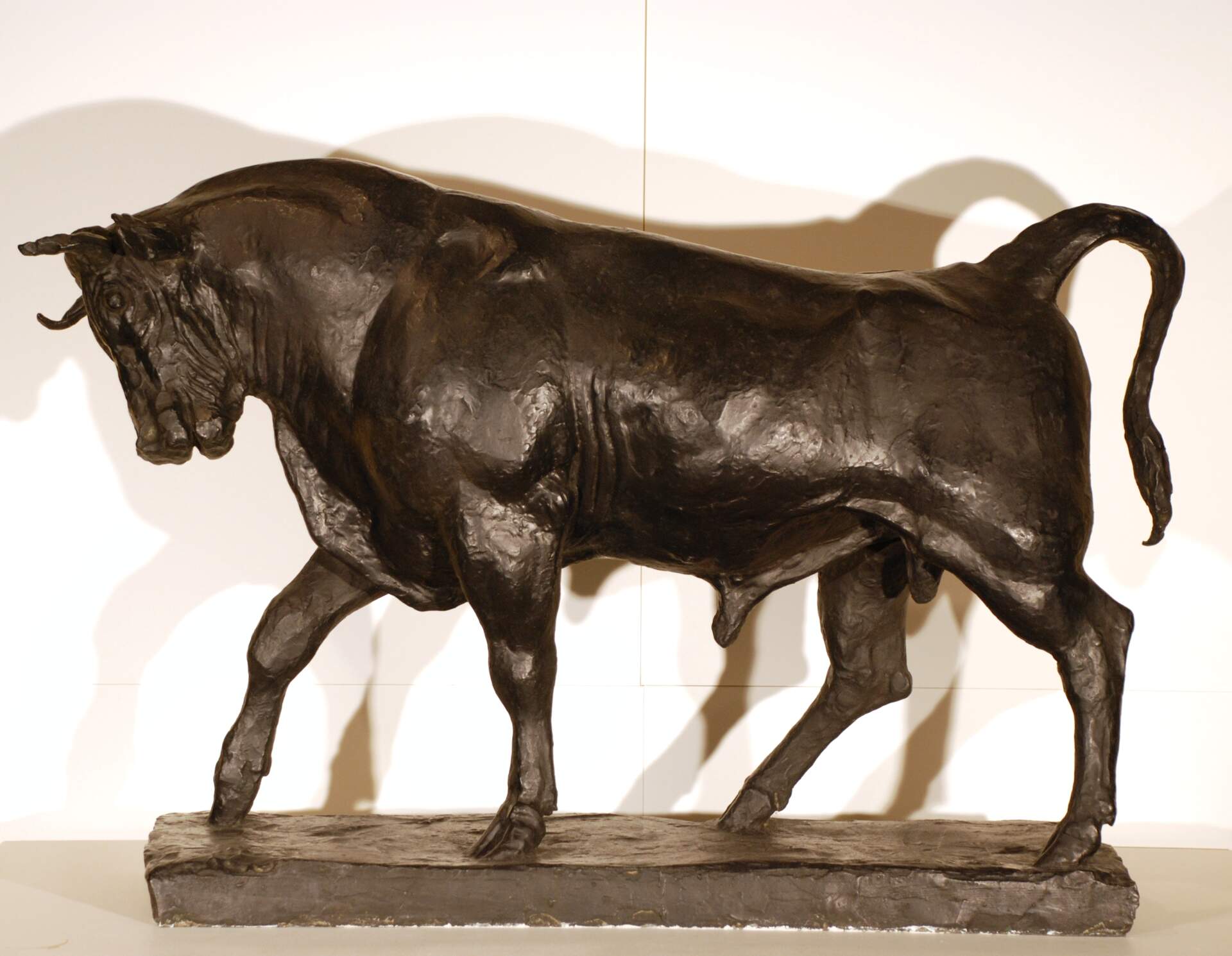Charles Cary Rumsey (1879-1922)Bull, Study for Smithtown Bull
about 1919-1922
bronze,cast by C. Valsuani
26 x 41 x 11 inches
Gift of Mr. and Mrs. Charles C. Rumsey, 1984
Buffalo native Charles Cary Rumsey studied sculpture in Paris, first as an apprentice to the American expatriate sculptor Paul Weyland Bartlett, and later at the Academies Julian and Colarossi. The famous animalier (animal sculptor) Emmanuel Fremiét was his chief advisor. Fremiét’s public sculptures are found throughout Paris, including the gilded Fame with Pegasus that adorns the northeastern pylon of the Pont Alexandre III. Rumsey depicted an array of animals in bronze, capturing their vitality in the Beaux-Arts tradition. Some animals, like his dog andirons, were created in life-like scale, while many others were miniaturized, such as his “portraits” of famous polo ponies. On occasion he earned commissions for major equestrian figures, such as Pizarro, which gave him the opportunity to research the particular breed of horse that the 16th-century Spanish conquistador would have ridden.
Charles Cary Rumsey married Mary Harriman in 1910, raised a family of three children, and lived on a Wheatley Hills estate in Glen Head, Long Island. Charles and Mary were active in the New York art scene, including participation in the Armory Show of 1913. Through these affiliations, a larger-than-life version of Rumsey’s Bull became a focal point of Smithtown, Long Island years after the artist’s death. According to the legend of the town’s founding, Richard Smith was permitted to define the perimeter of his property by riding on the back of a bull. In honor of this historical tale, Rumsey’s children, Mary Averell Rumsey and Charles Cary Rumsey, Jr. arranged for his sculpture to be dedicated in the town’s River Park in 1941. On its pedestal, the heroic sized bronze is 9 ft. 1 in. high by 14 ft. 11 ½ in. long by 3 ft. 10 in. deep.
—Nancy Weekly, Burchfield Scholar, Head of Collections & Charles Cary Rumsey Curator
Burchfield Penney Art Center, Buffalo, New York
